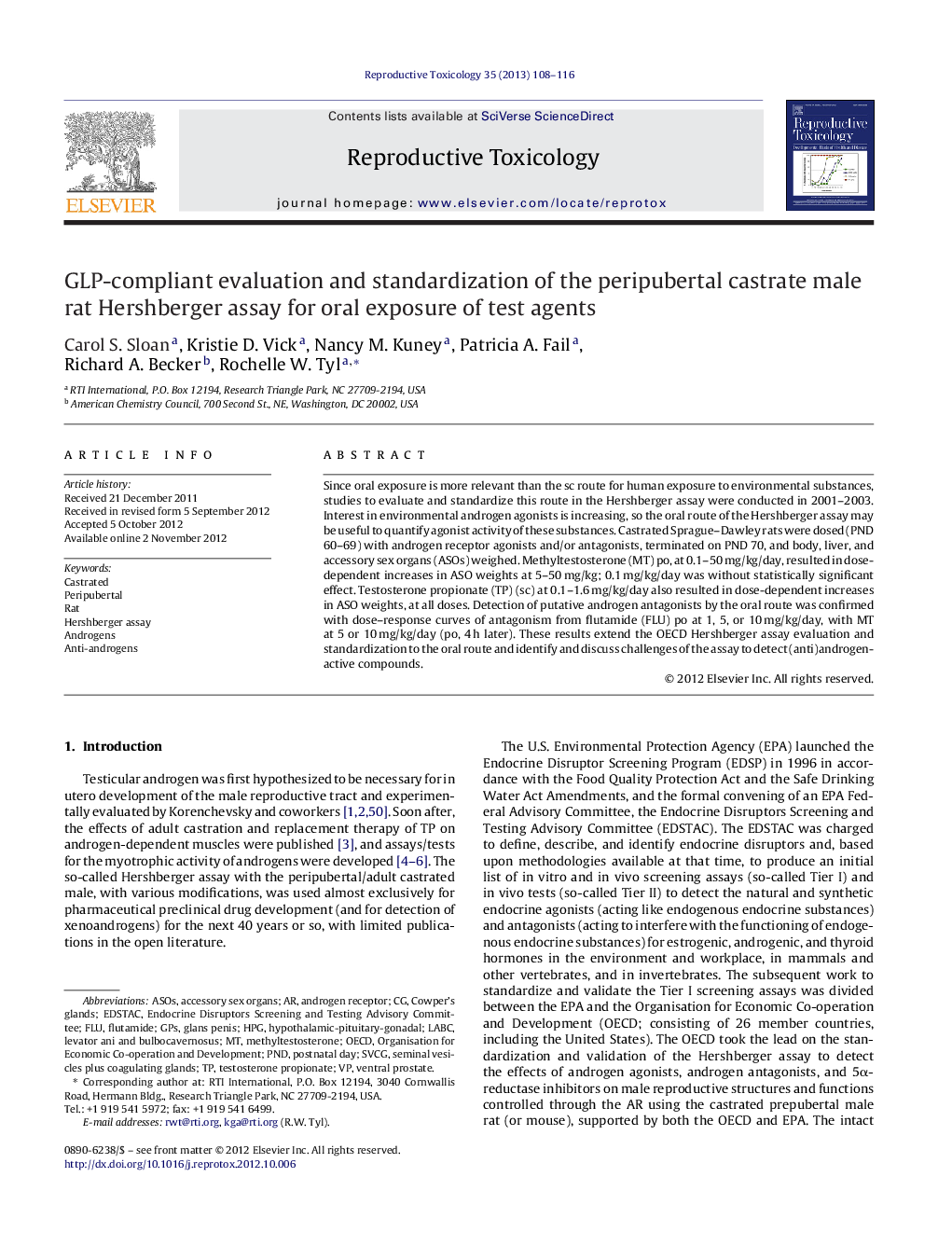| Article ID | Journal | Published Year | Pages | File Type |
|---|---|---|---|---|
| 2593582 | Reproductive Toxicology | 2013 | 9 Pages |
Since oral exposure is more relevant than the sc route for human exposure to environmental substances, studies to evaluate and standardize this route in the Hershberger assay were conducted in 2001–2003. Interest in environmental androgen agonists is increasing, so the oral route of the Hershberger assay may be useful to quantify agonist activity of these substances. Castrated Sprague–Dawley rats were dosed (PND 60–69) with androgen receptor agonists and/or antagonists, terminated on PND 70, and body, liver, and accessory sex organs (ASOs) weighed. Methyltestosterone (MT) po, at 0.1–50 mg/kg/day, resulted in dose-dependent increases in ASO weights at 5–50 mg/kg; 0.1 mg/kg/day was without statistically significant effect. Testosterone propionate (TP) (sc) at 0.1–1.6 mg/kg/day also resulted in dose-dependent increases in ASO weights, at all doses. Detection of putative androgen antagonists by the oral route was confirmed with dose–response curves of antagonism from flutamide (FLU) po at 1, 5, or 10 mg/kg/day, with MT at 5 or 10 mg/kg/day (po, 4 h later). These results extend the OECD Hershberger assay evaluation and standardization to the oral route and identify and discuss challenges of the assay to detect (anti)androgen-active compounds.
► We evaluated and standardized the Hershberger assay using oral dosing in rats. ► MT, po in castrates, caused dose-related increased accessory sex organ (ASO) weights. ► Flutamide, po plus MT, po in castrates caused dose-related antagonism of ASO weights.
